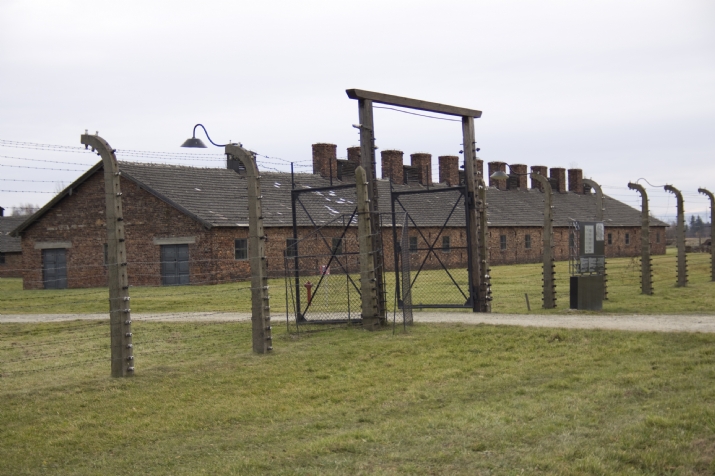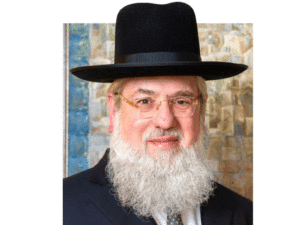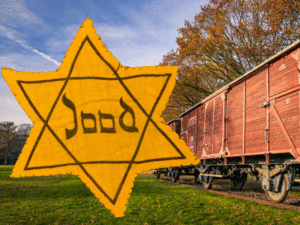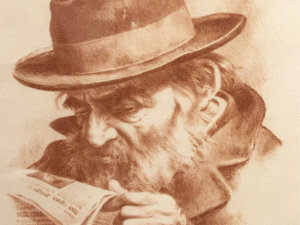One of the lead researchers in the project, Geoffrey Megargee, said when the project began in 2000, he had assumed they would find about 7,000 camps and ghettos in Germany and Nazi-occupied Europe. But as the work continued, he and his fellow researchers discovered more and more camps. The numbers skyrocketed to 11,500, then 20,000, then 30,000, and finally 42,500.
“The figure is so staggering that even fellow Holocaust scholars at the conference had to make sure they had heard it correctly,” the New York Times reported.
Megargee and co-researcher Martin Dean have compiled the thousands of sites in an encyclopedia-in-progress. Two volumes have already been published and five more are planned.
Jointly they provide a comprehensive history of the living and working conditions under the Nazis; the conduct and activities of the Judenrats; Jewish responses to the Nazi onslaught; and detailed histories of the liquidation of the various ghettos.
“The maps the researchers have created to identify the camps and ghettos turn wide sections of wartime Europe into black clusters of death, torture and slavery – centered in Germany and Poland, but reaching in all directions” the Times article noted.
The death and enslavement facilities mushroomed across the Nazi puppet regimes in all the occupied countries, from France to Romania and from Italy to Russia. The project has catalogued 30,000 slave labor camps alone.
WHAT THE PUBLIC KNOWS IS ONLY A FRACTION OF THE RECORD
The research shows that what the public knows about the Holocaust, based on the grisly records of the most notorious extermination camps such as Auschwitz, Dachau, Treblinka and Majdanek, represent but a fraction of the entire Nazi program.
In addition to these infamous camps, the report says, the Nazis operated thousands of other killing centers, forced labor camps, prisoner-of-war camps, and sites the Nazis cynically referred to as “care centers.” This is where pregnant women were forced to give premature birth while their babies were then killed, and camps where women were abused by German troops.
The work draws together records from dozens of archives, memorial sites and separate bodies of Holocaust research to create the first comprehensive catalogue of Nazi facilities. It includes first-hand accounts from survivors to help understand how each site worked and what its purpose was.
One such Holocaust survivor, referred to as Mr. Greenbaum, 84, shares his experiences during the war, including the months he spent in Auschwitz. He recalls the exact location of the camps where the Nazi imprisoned him. He recalls his concentration camp number A188991 tattooed on his left forearm.
He recalls the Starachowice Ghetto in his hometown in Poland, where his family and other Jews were held in 1940, when he was only 12.
He recalls a slave labor camp outside his hometown where he and his sister were relocated after the rest of his family were deported to Treblinka, where they were murdered. He recalls how the Nazis forced him to join other prisoners digging trenches that were used for dumping bodies of victims.
He was later moved to Auschwitz, then to a chemical manufacturing plant in Poland. He also recalls a slave camp in Flossenberg near the Czech border where he suffered severe starvation.
Greenbaum was liberated by American troops in 1945 at the age of 17 after he had served as a slave in five separate camps over a period of five years. “Nobody even knows about most of these places,” he said.
NO ONE IS EVER GOING TO DO THIS PROJECT AGAIN
The sheer magnitude of the Nazi kingdom of death and suffering made the researchers wonder whether it was beyond the scope of their mandate to cover the subject in its entirety.
“When the number of camps started to climb toward 10,000, we reviewed the project, to see if we wanted to limit it, Megargee told the Independent, a British newspaper. “We asked ourselves if we wanted to cover only those camps that held Jews. Three points became apparent, however.
“First, such a sorting process would be incredibly complex in itself. The Germans held Jews in many different kinds of camps. Many Soviet POWs, for example, were separated and murdered because they were Jewish.
“Second, there was an ideological link that bound all the camps and ghettos together
“Finally, and most importantly, we realized no one is ever going to do this project again,” Mcargee said, stressing the importance of puncturing the common misconception “that the Holocaust consists of Auschwitz and perhaps a few other places.”
The camps began appearing in Germany almost as soon as the Nazis came to power in 1933. The sheer number of them — 3,000 in Berlin and 1,300 in Hamburg alone — meant there could be no doubt that the Germans knew about their existence at the time, head researcher Dean told the New York Times. Denials from ordinary Germans about knowledge of the camps are simply not credible
“You literally could not go anywhere in Germany without running into forced labor camps, POW camps, and concentration camps,” said Dean. “They were everywhere.”
Organizers hope the massive project will not only prove a valuable resource to survivors but also serve as a tool in silencing Holocaust denial.
STUDY MAY BOOST SURVIVOR CLAIMS FOR UNPAID INSURANCE AND PENSIONS
The New York Times noted that Holocaust survivors could use the new research in claims over unpaid insurance policies, stolen property claims and in some cases, pensions.
The article quoted a Holocaust restitution attorney who said that countless claims have been rejected because the victims were in a camp or ghetto that the German government refused to acknowledge.
Then, about 15 years ago, a bizarre discovery was made that encouraged survivors to fight for compensation for their years of labor in Nazi ghettos. Even during the Holocaust, it was discovered, social security insurance was paid on behalf of the Jews who worked for German employers in the ghettos. That meant those Jews were entitled to a form of pension.
“We didn’t know about it when we were in the ghetto,” Holocaust survivor Uri Hanoch told Haaretz in a January phone interview. “We never imagined that the Germans were registering us as regular employees. We knew only that you went to work and if you didn’t, you were sent to a concentration camp to be killed.”
“It’s bizarre,” said Hanoch, now in his eighties. “On the one hand they were slaughtering us; on the other, the very meticulous Germans were paying us social benefits – at least on the books.”
The discovery, during an era of Holocaust “house-cleaning” when European governments were negotiating restitution to Nazi victims, prompted the passage of a new law in Germany enabling people who worked in the ghettos to receive the pension to which they were entitled.
In 2002, the Bundestag, or German Parliament, passed a law: “German Pensions for Work in the Ghettos,” based on an earlier ruling that work carried out in the ghettos could be recognized as employment time under German pension laws.
GHETTO PENSION LAW: LIP SERVICE ONLY
At first everyone welcomed the law, but when push came to shove, it turned out to be little more than pretty words on paper. The German government balked, turning down about 90 percent of the applicants for pensions. The reason given was that survivors could produce no formal proof that their claims were legitimate.
“Where are the pay stubs?” German judges asked, echoing the cynicism of European insurance companies who have resisted claims for life insurance benefits belonging to survivors’ murdered relatives with a similar question: “Where’s the death certificate?”
The German courts tried other pretexts to avoid paying the pensions. They insisted that many of the applicants, like Mr. Hanoch, were in their early teens at the time, too young to have held proper jobs.
The judges disingenuously ignored the reality that under the Nazis, children tried to pass themselves off as adults since whoever could not work received no food and was among the first to be deported and murdered.
INTERNATIONAL BACKLASH FORCES GERMANY TO RECONSIDER
At the time the ghetto pension law was passed, the government believed the payments would not be exorbitant. It estimated that about 700 of the ghetto workers would apply for pensions. This was despite the fact that there had been more than 1,150 ghettos. The Warsaw ghetto alone held more than half a million Jews.
Yet once the 2002 law was enacted and 70,000 survivors applied to receive pensions, an alarmed National Pension Board did an about face, throwing up all kinds of roadblocks to worm out of having to make the payments.
The German response triggered an international scandal. A turning point came after one of the German judges handling the survivors’ pension requests decided to act on their behalf.
The judge, Jan-Robert von Renesse, the son of a staunch Nazi, lashed out at his fellow jurists. He said he was shocked that instead of turning to historians and experts, “the jurists denied the claims of the survivors based on unscientific sources like Wikipedia,” he told Haaretz.
“They went into Wikipedia and got a partial list of ghettos from there. If the survivor who filed the claim was in a ghetto that wasn’t mentioned there, his claim was denied.”
“I told them that it was unacceptable, that they had to consult with a historian. They said it was expensive, required a lot of time and that Wikipedia was sufficient,” Renesse said in the interview.
The jurist said he found the demand for documents proving that the survivors were engaged in forced labor wholly unreasonable. “The only proof that most of the survivors have is the number on their arm. Nobody received a document from the SS for pension purposes,” he scoffed.
MOVING THE PROCEEDINGS TO ISRAEL
Renesse ultimately helped many victims of the Nazi regime receive some measure of justice. Due to the claimants’ advanced age, he used his influence to have the court proceedings moved to Israel.
“I couldn’t imagine just sending out some questionnaire and saying ‘Here, write down what it was like in the ghetto in three lines. Forget that your parents were murdered there and just tell us, did you enjoy the work?’
Renesse traveled to Israel and spoke with 120 survivors. He granted the pension claims in about 60 percent of the cases he reviewed. His efforts also changed the course of jurisprudence. In June 2009, the Federal Social Court changed its ruling and ordered a review of all rejected claims.
It was too late for many of the elderly survivors. As the legal wrangling was playing out, thousands of claimants had died.
“When I think back to all the encounters I had in the courtroom,” Renesse recalled, “I am deeply moved by the conduct of the claimants. These extraordinary people, who endured so much and managed to build new lives, still had the grace, or magnanimity, to show an expression of reconciliation to a German — that will always stay with me.”
Renesse’s passionate advocacy for fair treatment for Holocaust claimants earned him enemies back home. After the pension law was changed, he was suddenly removed from all of his ghetto pension cases.
His application for the post of presiding judge of one of the court’s judicial divisions was blocked and he was assigned a different post where he now reviews disability status claims. German justice at its best.








